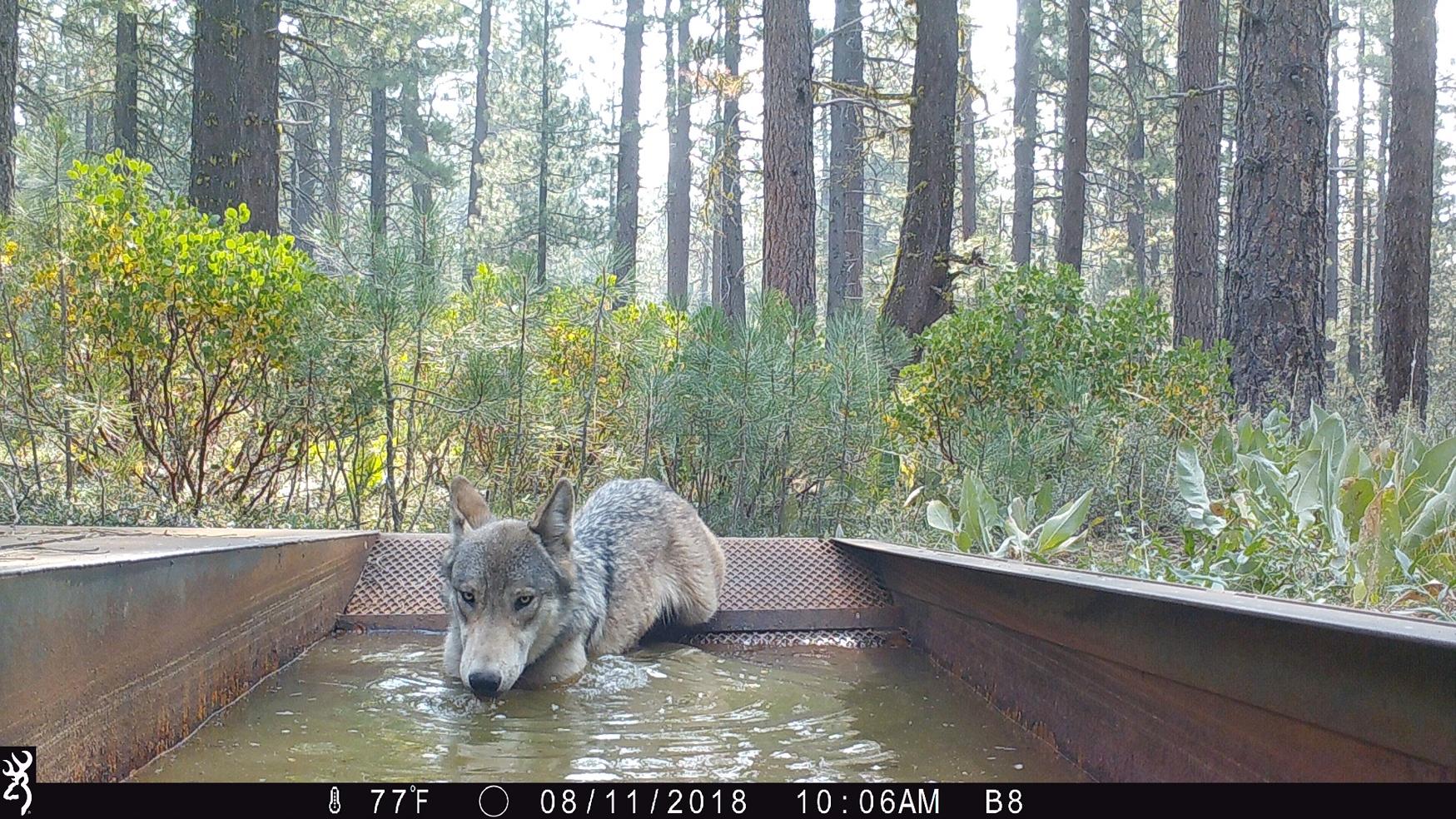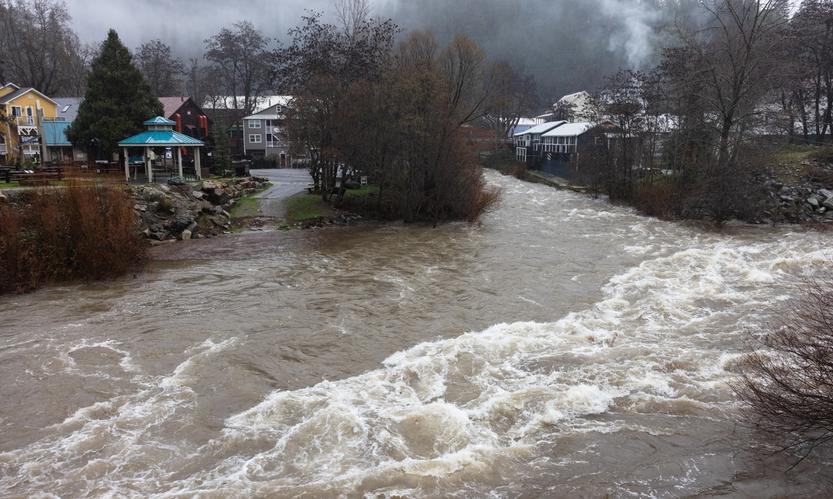Plumas County Supervisors Discuss Wolves and Property Taxes
February 13, 2025

An adult gray wolf drinks from a water guzzler in Lassen National Forest, August 2018. Photo by T. Rickman, U.S. Forest Service.
QUINCY — At its February 11th meeting, the Plumas County Board of Supervisors and members of the public heard a presentation by Rick Roberti, Sierra Valley rancher and President of the California Cattlemen’s Association, about threats to livestock and wildlife from the county’s growing wolf population. Mr Roberti stated that some ranchers are losing $20,000 to $50,000 per year from depredation. Wolves are also reducing populations of mule deer and other natural prey, he said, and that, in turn, makes them more likely to attack cattle.
Ranchers have few options for controlling wolves because the gray wolf is listed as endangered under the federal and California endangered species acts, so harassing, chasing, trapping, or killing wolves is illegal. Ranchers can be compensated for livestock destroyed by wolves, but that requires confirmation of a kill by the California Department of Fish and Wildlife (CDFW), which often isn’t feasible. Members of the public reported having sighted wolves in several areas of the county. CDFW doesn’t publish the number of gray wolves in Plumas County, but the CDFW website lists five packs with ranges overlapping parts of the county. The possibility of removing the gray wolf from the endangered species list was raised in the public discussion of Mr Roberti’s report. He recommended that concerned citizens should contact members of the California Fish and Game Commission. Sheriff Todd Johns said that the decline in deer populations could impact recreational hunting and related revenues. He suggested the Board could work with other northern counties through the California State Association of Counties to find a solution.
Later in the meeting, a heated discussion developed around an item on recent property tax increases that was continued from prior Board meetings on January 21, December 3, November 11, and November 5. Tax assessments released since November have shown large increases in the assessed value of some properties — about 20% of properties in the county, according to the Plumas Sun.
Supervisor Mimi Hall opened the discussion by acknowledging the public surprise at the increased assessments and proposed asking County Counsel to investigate whether the reassessment process complied with the minimum threshold of state law and whether there is a pathway for allowing payments to be deferred. Several members of the public expressed anger at the size of the increases and asked how they were justified.
County Assessor Cynthia Froggatt explained that many properties that had previously been devalued under Proposition 8, passed by voters in 1978, had not been reassessed for some years and that the law allows those properties to be revalued at current market value. Otherwise, Proposition 13, also adopted in 1978, would normally limit tax increases to 2% per year unless a property changes hands or undergoes new construction. Following discussion, the Board voted to direct County Counsel to investigate the questions posed by Supervisor Hall and report back at a future meeting.
Featured Articles

Storms Bring Heavy Rainfall and Local Disruptions →
December 22, 2025
Sierra County faces power outages and water issues amid heavy rainfall and storm warnings.
215 Animals Seized for Cruelty from Grass Valley Property →
December 22, 2025
Human Remains Found Near South Yuba Bridge in March Identified →
December 17, 2025
Transfer Station Burn Suspended After Community Concerns →
December 16, 2025
Sierra Hardware Plans Extensive Repairs After Flood Damage →
December 8, 2025